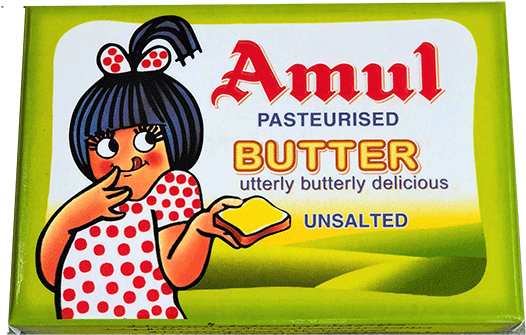If you are from India, the name Amul needs no formal introduction. Amul, also known as the Gujarat Cooperative Milk Marketing Federation (GCMMF), is engraved in our general consciousness. The brand is wholly responsible for India’s dominion over the global milk market. Thanks to Amul, India now produces over 130 million tons of milk annually.
Spearheading the banner of the white revolution, what started with the union of a few farmers ended up in a multi-billion dollar industry. With a perfect start-up story, this brand is living proof of the fact that big changes come from taking small steps.
Table of Contents
Beginning of Amul:
Amul was established about 65 years ago to end the exploitation caused by local trades on small-scale farmers. Those farmers who worked day-n-night to feed their family were given small incentives, while traders lived lavishly. Angered by the injustice, Tribhuvandas Kishibhai Patel established AMUL.
Numbers never lie. And the thing about Amul is that it’s very transparent in its approach. Within 4 decades, Amul managed to establish itself as a full-fledged organisation with over 3.6 million milk producers generating over 5 million litres each day.
Amul is also the 8th largest milk processor in the world. Now, that’s impressive.
While looking through the business model and popular strategies used by Amul, business development expert Hirav Shah discovered the key factors for Amul’s whirlwind success.
These are:
1- The Amul Mascot:
No matter wherever you are and from which city you belong, you will always find traces of the ‘Amul girl’ in popular culture. In its longest-running commercial campaign, the Amul mascot has made itself a household face in the country. And the best thing about the Amul mascot is that it is constantly used to provide effective social commentary. This keeps people talking and has resulted in increased consumer traction.
Amul is essentially investing more in brand recall value. It’s a brilliant strategy that Amul has mastered over the years.
2- Innovation:
Amul hasn’t shied away from constantly re-inventing themselves. From launching new products to advertising interesting marketing campaigns, Amul has tried it all. One thing that I have noticed about Amul is that they are never stagnant. Often, big firms stop trying to interact with the consumers as they are assured of their place in the market. Amul chooses to follow its counter-strategy. They make sure that they are the centre of discussion 24 hours*7, even if they are overwhelmingly popular.
3- By the people, for the people:
Amul operates on a three-tiered cooperative framework. That means people from all sectors of the economy are equally involved in the business. Milk is collected at the village dairy society, procured and processed at the district milk union and marketed at the state milk federation.
Although there is a hierarchy in the system, it still manages to maintain a good repo across the country. Amul gives farmers a good opportunity to make major profits by a huge margin. When the people working for the company are satisfied, ultimately the results would be fruitful.
Conclusion:
In a country where foreign brands dominate the market, Amul stands strong with its huge consumer base. Without ever compromising customer’s trust, Amul has travelled miles to become a household name in India. What started with a noble cause progressed into a successful conglomerate. The nation and the people of India are proud of what Amul has achieved, proving that Amul is truly a ‘priceless’ asset to the Indian economy-opines Business development expert Hirav Shah.



























